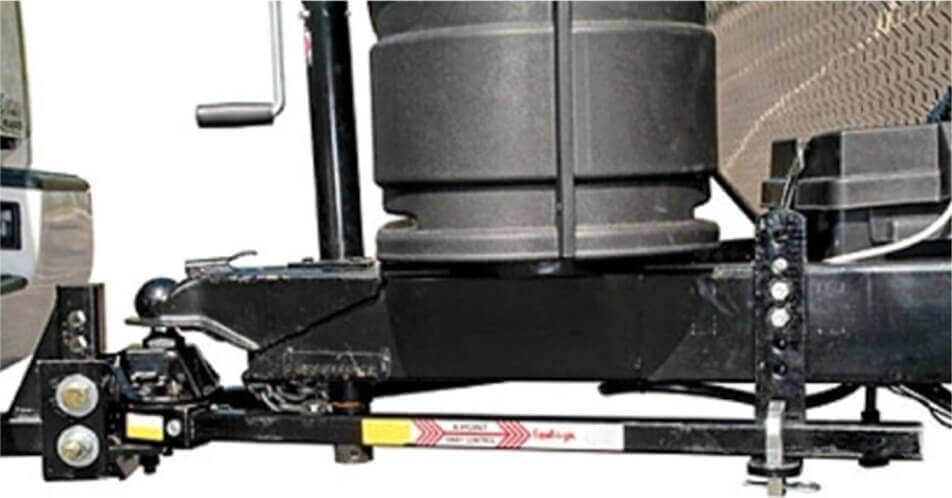 When towing a trailer or RV, it’s important to take sway control and weight distribution into consideration. Both of them contribute to how smooth a ride you’ll have and how well your vehicle handles. It will also reduce the chances of causing damage to your vehicle, having control issues, or feeling the effects of fishtailing. Strong winds are only one factor that can have an effect on towing. Passing vehicles, especially large trucks, can also make your trailer susceptible to movement. Reducing movement and maintaining control when braking or turning lessens the risk of safety hazards as well.
When towing a trailer or RV, it’s important to take sway control and weight distribution into consideration. Both of them contribute to how smooth a ride you’ll have and how well your vehicle handles. It will also reduce the chances of causing damage to your vehicle, having control issues, or feeling the effects of fishtailing. Strong winds are only one factor that can have an effect on towing. Passing vehicles, especially large trucks, can also make your trailer susceptible to movement. Reducing movement and maintaining control when braking or turning lessens the risk of safety hazards as well.
How to reduce sway
Sway control prevents the side-to-side movement of the RV due to wind, turning, or sudden movements. Besides using a sway control hitch, there are other things you can do to mitigate the effects of sway while driving. When packing your RV, try to evenly distribute your supplies and equipment. If you do the 60/40 rule of 60% towards the front and the rest towards the back, this prevents having the heaviest supplies congregated in one area. Make sure any items that could move around and disrupt your weight distribution are secured in place. Don’t drive too fast. Keep your speed limit below 55 mph to reduce wind resistance. If you do start to feel swaying while driving, you would treat it much the same as if you hit an icy patch in winter. Turn into the sway, don’t try to turn against it. Release the gas pedal and don’t slam on your vehicle’s brakes, try to gradually apply the brakes to your trailer. This may go against your instinct, but it will prevent you from losing control.
How weight distribution hitches work
Weight distribution spreads out the weight so all the pressure is not put on your RV coupling. This is usually achieved with a weight distribution hitch, which levels out the tongue weight. They use spring bars which span the coupling, with one end on the trailer frame and the other on the tow vehicle receiver. Typically a weight distribution hitch is needed if the RV (including everything inside it) is more than 50% heavier than the tow vehicle.
Equal-i-zer Sway Control
Luckily,
Equal-i-zer has a hitch system that combines sway control with weight distribution to solve these problems. Equal-i-zer’s design and features work to balance the load to provide a smoother and more stable ride. Sway control hitches employ friction to reduce movement. Equal-i-zer puts friction around the hitch ball, and pulls downward on the trailer brackets, keeping your RV aligned behind your tow vehicle. It has four points of resistance, with two at the hitch head and two at the brackets. The weight distribution aspect of Equal-i-zer adjusts to the weight of the trailer. The weight is sent towards the front of the tow vehicle, which puts less stress on the rear and makes it easier to brake.
When considering the weight of your RV and tow vehicle, make sure it does not exceed the maximum capabilities of either. Not only will that prove dangerous to tow, but it will also render the sway control hitch less effective. Different hitches are built for different weight ratings.